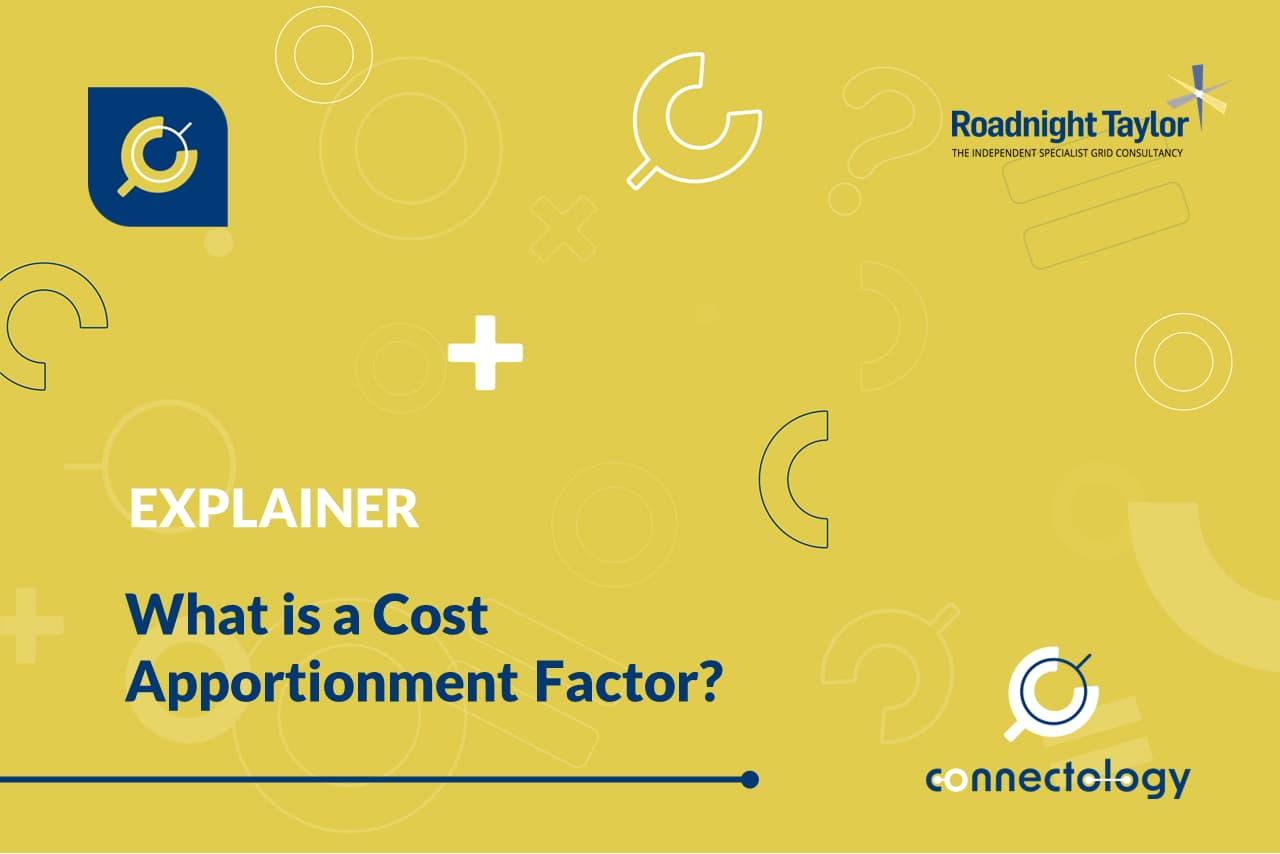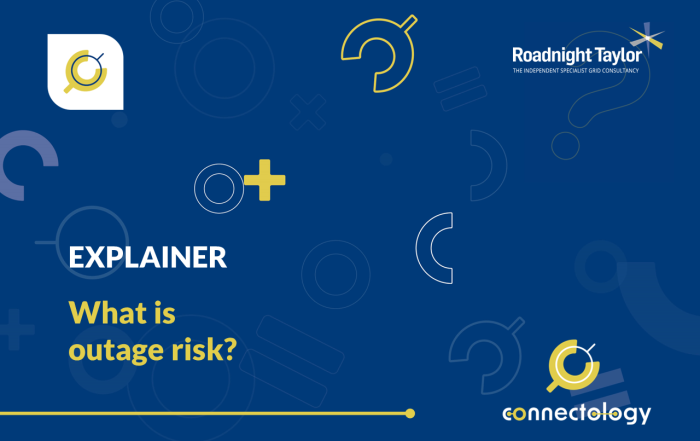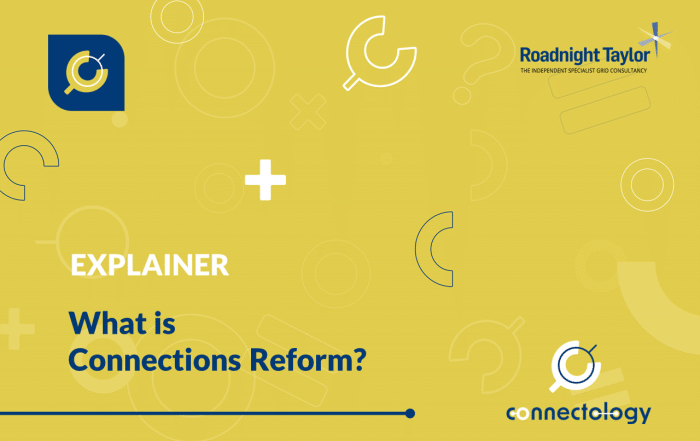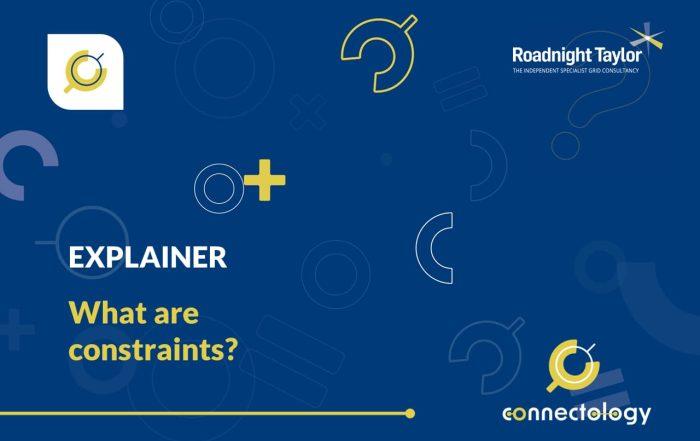What is a Cost Apportionment Factor?
A Cost Apportionment Factor (CAF) is part of the method by which electricity network reinforcement costs are passed on to connecting customers. A CAF is applied up to the level of the high-cost cap. We explain more below.
Article by Pete Aston – acknowledged expert in networks
Pete joined Roadnight Taylor from Western Power Distribution, the UK’s largest DNO, where he was Primary System Design Manager. He led a team of sixty responsible for all connections to the extra high voltage network, as well as leading WPD’s interaction with National Grid (NGET and NGESO) at the transmission/distribution boundary.
10 July 2023

A Cost Apportionment Factor (CAF) is part of the method by which network reinforcement costs are passed on to connecting customers. The other key part is the high-cost cap. A CAF is applied up to the level of the high-cost cap.
Customers connecting to the electricity grid, either demand or generation, may potentially trigger network reinforcement. Following the recent changes to network charging arrangements (SCR), demand customers no longer pay towards reinforcement of the network (unless a high-cost cap is triggered), but generation customers still pay towards reinforcement of the network at the same voltage as their point of connection.
Network power flow reinforcement
If a generation connection triggers reinforcement of an asset due to excessive power flow, then the works are applied to the connection using a CAF. The basic principle is that the cost of the reinforcement is charged to the connecting customer, taking the export capacity the customer requires as a proportion of the new capacity of the network following reinforcement.
For example, a 5MW solar farm might trigger the reinforcement of a 33kV circuit, with a total reinforcement cost of £500k. If the new rating of the network following the reinforcement is 30MW, then the solar farm developer would be charged 5/30ths of the cost. The CAF is usually quoted by the DNOs as a percentage, so in this case it would be 16.7%. The charge to the customer would be 16.7% of £500k, so £83.3k.
Network fault level reinforcement
The CAF calculation for fault level reinforcement is slightly different. Instead of connection export capacity, the fault infeed of the connecting site at the substation that needs reinforcement is used. This fault infeed will typically be lower than the fault infeed of the site at the point of supply (metering circuit breaker), as the network impedance will reduce it. As fault infeed is often quite small, the CAF calculation has a multiplier of three on the infeed.
For example, if a solar farm had a fault infeed (at a substation that needed reinforcement) of 0.5kA, and the new capacity of the reinforced switchgear was 25kA, then the CAF would be 3 x 0.5 / 25 = 1.5/25ths = 6%.
It’s worth noting that different technologies will have different fault infeeds for the same installed capacity. Technologies which have an inverter (solar, batteries, some wind turbines, etc), will generally have a low fault infeed. Synchronous machines (gas engines, CCGTs, cryo batteries, steam turbines, etc) will typically have a high fault infeed.
What do developers need to watch out for?
There are a few issues that arise in connection offers relating to CAFs.
1. No information is provided about the CAF. This is the most common issue and means that developers have no way of knowing how the DNO has calculated the reinforcement charge. The DNO should be able to provide: a) the customer connection capacity (or fault infeed) they have assumed, b) the new network capacity which has been used, and c) the total cost of the reinforcement works. If the DNO hasn’t provided this, then ask for it!
2. The CAF is incorrect. DNOs can make mistakes with any of the three elements involved in calculating the CAF, or even with the requirement to trigger the reinforcement in the first place. A good knowledge of the network will help developers understand whether a CAF looks reasonable. If it doesn’t look reasonable, then challenge it.
3. The CAF contribution can get combined with the high-cost cap. Some DNOs will lump in a CAF charge with a high-cost cap to give a total effective % charge. For example, if a 5MW connection triggered a £1.2m reinforcement scheme that gave a new network capacity of 40MW, there would be a CAF and high-cost cap element as below:
a. High-cost cap is £200/kW x 5,000kW = £1,000,000. Charge over the high-cost cap is £1.2m-£1m = £200k
b. CAF (up to high-cost cap) = 5 / 40 x £1m = £125,000
c. Total charge = £200k + £125k = £325k
d. Total effective % charge = £325k / £1.2m = 27.08%
If this total percentage has been calculated correctly, then there is no under or over charging. But it is not a transparent way of presenting the charge, and the DNO should be asked to split out the cost into the CAF and high-cost cap elements.
How can Roadnight Taylor help?
We can help developers understand any reinforcement charges presented in your connection offers, including whether the CAF, high-cost cap and SCR rules have been correctly applied. And we may be able to suggest changes that will reduce the requirement for reinforcement, which could result in cost savings.










